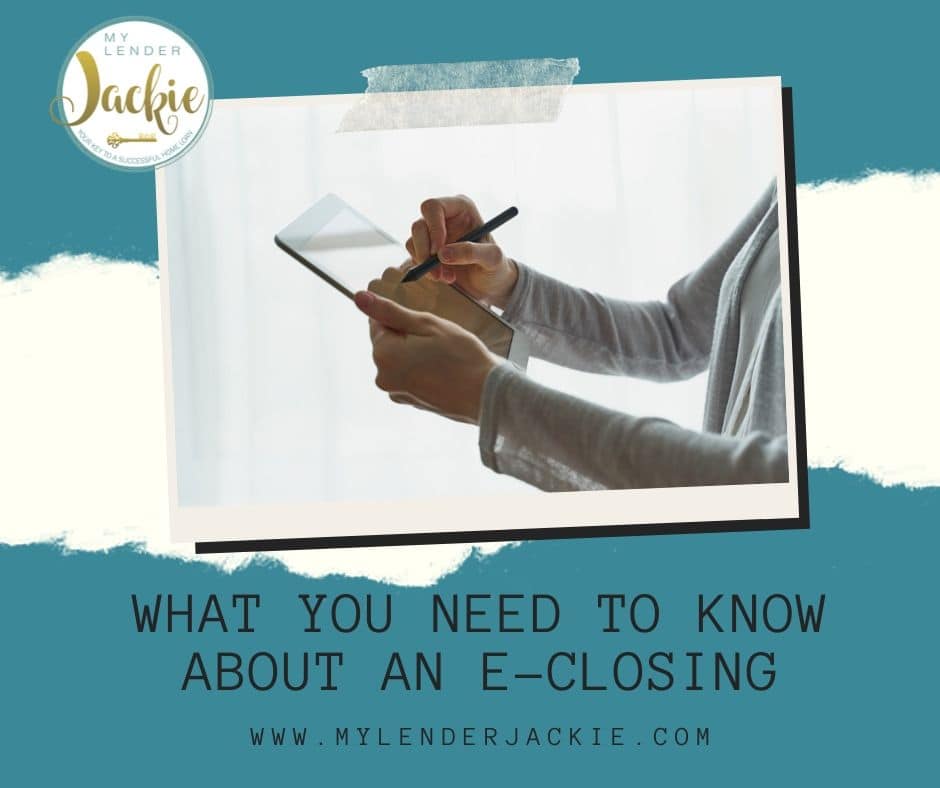As many things shift to online and electronic services during pandemic social distancing measures people buying and selling homes are getting used to a new way of conducting real estate transactions. One of those things is the way mortgage papers are signed.
Depending upon the state you live in, electronic closing procedures could mean anything from conducting the whole process online to meeting a notary in your preferred place. Let’s take a look at what an e-closing is and how e-closings are done.
What Is an E-Closing?
An e-closing is simply going over all the final documentation of your mortgage loan and at least one signature is signed on an electronic device.
Previously, closing documents would be reviewed at a title company’s conference room with a big stack of printed documents and an ink pen for borrowers to sign on the lines. The process of moving some forms to an electronic format and having a notary come to you with paperwork has become more common over the last several years, even before the pandemic started. Today closings count as an e-closing even if you only make one signature with an electronic device instead of on paper.
Since the pandemic started more and more states are moving to some type of e-closing format.
Types of E-Closings
There are three different types of e-closing processes. What is available to a buyer/borrower depends upon the state in which they reside.
-
Hybrid E-Closing
This a closing where the borrower and notary meet in person and sign closing documents both traditionally with ink on paper and electronically. This is how the majority of e-closings are done.
-
In-Person E-Notarization A.K.A IPEN
This is where the borrower and notary public meet in person and every document is signed digitally on an electronic device and notarized electronically as well.
-
Remote Online Notarization A.K.A. RON
This is where all documents are signed electronically, but the notary is not physically present. They conduct the closing through a live webcam.
Since the beginning of the pandemic and things shifting to virtual, online, and electronic venues many people may expect to be able to close with a RON process, however, very few states allow RON closings on a regular basis and have only adapted RON closings as acceptable during the stay-at-home measures. California has not changed its laws to accept RON closings so all e-closings in California still require in-person meetings.
What Happens at E-Closings?
Since California currently only allows in-person closings we will go over what happens there. Your mortgage broker will set up an appointment with a notary to meet in a place convenient to you. Usually, this is inside your home. The notary will ask to see your ID to take a copy of it so they can prove you are you. They may also ask for a fingerprint.
The notary will then proceed to go over the closing documents with you by explaining what each document is in overview and showing you where to sign then handing it over for you to then read and sign and then hand back. They will go over each part of the closing paperwork section by section before you sign each line ensuring that you understand what the terms of the mortgage and home purchase are and what you are signing your name to.
Hybrid closings will require a few “wet-ink signatures” (this is the term used for a traditional pen and paper signature). How many wet signatures, if any at all, is required depends upon the laws of where you live.
The benefit to borrowers of meeting a notary in person is you are more likely to receive a much more thorough closing process. It gives improved understanding and there is no questioning of identification issues.
For more information on California COVID mortgage processes and applying for a mortgage during this time please contact me anytime.


